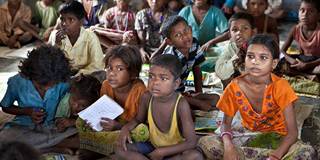With a general election approaching, India's government is planning a further extension of caste-based quotas in schools and public-sector jobs. This is typical of the two main parties' tendency to choose the path of least political resistance and defer deep reforms.
PATNA, INDIA – On January 7, Prime Minister Narendra Modi’s government suddenly announced that an additional 10% of school seats and government jobs would be set aside for the “economically weaker sections,” meaning the poor among the upper castes. This was on top of the already extensive quotas for various historically oppressed castes under India’s wide-ranging affirmative action policy. The government rushed through a constitutional amendment to this effect on January 8 and 9. The decision may well be challenged in the courts, but the announcement was an implicit confession of three failures.

PATNA, INDIA – On January 7, Prime Minister Narendra Modi’s government suddenly announced that an additional 10% of school seats and government jobs would be set aside for the “economically weaker sections,” meaning the poor among the upper castes. This was on top of the already extensive quotas for various historically oppressed castes under India’s wide-ranging affirmative action policy. The government rushed through a constitutional amendment to this effect on January 8 and 9. The decision may well be challenged in the courts, but the announcement was an implicit confession of three failures.